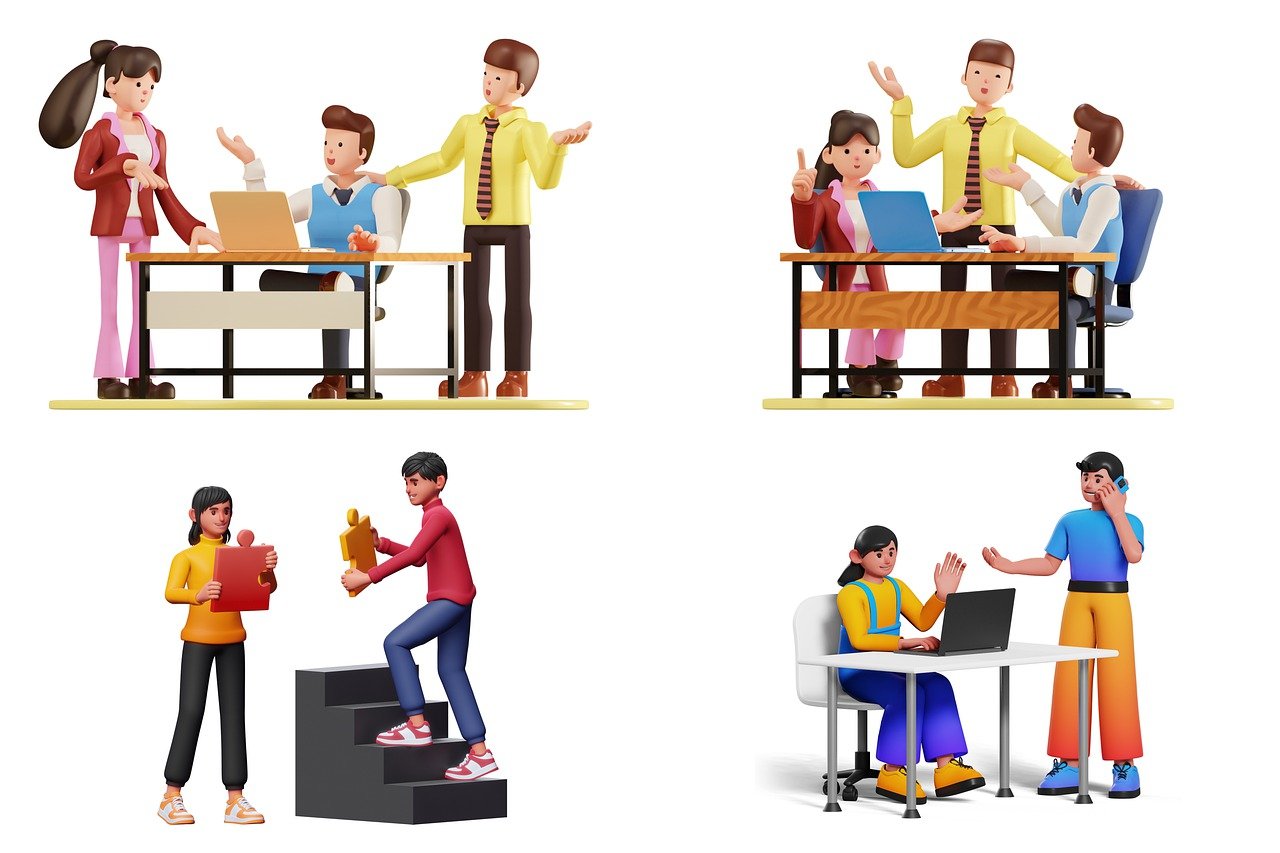Best Collaboration Tools for Remote Teams in 2024: Boost Productivity & Communication
Remote work has become a staple in many industries, and for good reason. It provides flexibility, reduces overhead costs, and allows teams to tap into a global talent pool. However, one of the biggest challenges remote teams face is maintaining effective communication and collaboration. Fortunately, a wide array of collaboration tools has emerged, designed to streamline workflows, improve communication, and ensure teams stay connected no matter where they are. Here’s a look at the best collaboration tools for remote teams that can help elevate productivity and communication.
Slack – Real-Time Messaging and File Sharing
Slack has become a go-to collaboration tool for remote teams. It’s a powerful messaging platform that organizes conversations into channels, making it easy to group discussions by project, department, or topic. Users can send direct messages, share files, integrate with other tools like Google Drive, Trello, and Zoom, and even create automated workflows using Slackbot.
- Key Features:
- Real-time messaging and threaded conversations
- File sharing and cloud storage integration
- Integration with over 2,200 apps and services
- Voice and video call options for meetings
- Customizable notifications to stay on top of important conversations
- Why It’s Great for Remote Teams: Slack’s ease of use, flexibility, and integrations make it ideal for remote teams that need a central hub for communication and collaboration.
Trello – Task and Project Management
Trello is a visual project management tool that helps remote teams organize and track their work. Its board-and-card system allows teams to create and assign tasks, set deadlines, and monitor progress visually. Trello also offers collaboration features such as team commenting, file attachments, and due date reminders.
- Key Features:
- Customizable boards, lists, and cards for task management
- Integration with Google Drive, Slack, and other tools
- Drag-and-drop task management
- Automation with Butler to simplify repetitive tasks
- Calendar view for deadlines and project timelines
- Why It’s Great for Remote Teams: With its simple drag-and-drop interface and collaborative features, Trello helps remote teams stay organized and ensure everyone is on the same page, even when working from different locations.
Zoom – Video Conferencing and Virtual Meetings
As a leader in video communication, Zoom has revolutionized the way remote teams hold meetings. Its high-quality video and audio capabilities make it an excellent choice for virtual meetings, webinars, and team check-ins. Zoom also offers screen-sharing, breakout rooms for group discussions, and recording options.
- Key Features:
- HD video and audio quality
- Screen sharing and virtual whiteboards
- Breakout rooms for smaller discussions
- Meeting scheduling and reminders
- Integrations with calendar apps like Google Calendar and Outlook
- Why It’s Great for Remote Teams: Zoom makes it easy for remote teams to stay connected through virtual meetings, offering features that allow teams to collaborate effectively even when they’re not in the same room.
Asana – Task and Workflow Management
Asana is a project and task management tool that enables remote teams to track their work and ensure deadlines are met. It provides a comprehensive dashboard to visualize work in progress, assign tasks, set timelines, and collaborate on deliverables. Asana also offers project templates and automation to simplify workflows.
- Key Features:
- Customizable task lists, boards, and timelines
- Project templates for quick setup
- Team collaboration features like comment threads and file sharing
- Timeline view to manage deadlines and dependencies
- Reporting and analytics tools to track team performance
- Why It’s Great for Remote Teams: Asana’s ability to break down complex projects into manageable tasks, coupled with its powerful collaboration tools, makes it an essential tool for remote teams to stay organized and meet deadlines.
Google Workspace – Document Collaboration and Cloud Storage
Google Workspace (formerly G Suite) includes a suite of tools designed for team collaboration, including Gmail, Google Drive, Docs, Sheets, Slides, and Meet. These tools allow team members to work together on documents, spreadsheets, and presentations in real time, making it a versatile choice for remote teams.
- Key Features:
- Real-time collaboration on documents, spreadsheets, and presentations
- Cloud storage with Google Drive
- Integration with other Google services like Gmail and Calendar
- Google Meet for video calls and meetings
- Access control for document sharing and permissions
- Why It’s Great for Remote Teams: Google Workspace allows remote teams to collaborate seamlessly on documents and projects while benefiting from the cloud storage and communication tools that ensure easy access to files anytime, anywhere.
Miro – Digital Whiteboard and Brainstorming
Miro is a digital whiteboarding tool that helps remote teams brainstorm, map out ideas, and collaborate visually. It provides a shared workspace where teams can create diagrams, flowcharts, mind maps, and sticky notes. Miro is particularly useful for design, strategy, and planning sessions.
- Key Features:
- Infinite canvas for brainstorming and collaboration
- Templates for flowcharts, mind maps, and diagrams
- Real-time collaboration with team members
- Sticky notes, text boxes, and drawing tools
- Integrations with Slack, Trello, and Google Drive
- Why It’s Great for Remote Teams: Miro mimics the creative energy of in-person whiteboard sessions and is ideal for remote teams that need to brainstorm ideas, strategize, or work through complex problems together.
Notion – Knowledge Management and Wiki Creation
Notion is an all-in-one workspace that combines note-taking, databases, project management, and knowledge sharing. It’s highly customizable, allowing remote teams to create knowledge bases, document workflows, and track projects in a centralized hub.
- Key Features:
- Customizable pages for notes, to-dos, and documentation
- Task management features such as Kanban boards and calendars
- Database integration for managing information
- Real-time collaboration on documents and notes
- Templates for various project types
- Why It’s Great for Remote Teams: Notion helps remote teams keep all their important information in one place, from knowledge bases to project tracking, reducing the risk of losing valuable data in multiple systems.
Monday.com – Work Operating System and Team Collaboration
Monday.com is a work operating system (Work OS) that allows remote teams to plan, track, and collaborate on projects and workflows. It offers customizable workflows, automation, and integrations with other tools. Teams can use it to monitor tasks, timelines, and communication in a unified space.
- Key Features:
- Customizable workflows for different team needs
- Task assignment, due dates, and progress tracking
- Dashboards to monitor project status
- Integrations with Slack, Google Drive, and other apps
- Automations to save time on repetitive tasks
- Why It’s Great for Remote Teams: Monday.com offers a visual, centralized platform that allows remote teams to track tasks, manage projects, and communicate effectively, all in one place.
The right collaboration tools can make all the difference for remote teams. Tools like Slack, Trello, Zoom, and Asana are essential for effective communication, project management, and workflow organization. By using these tools, remote teams can overcome the challenges of working from different locations, enhance productivity, and maintain strong collaboration. Investing in the best collaboration tools will help ensure that your remote team operates efficiently, stays connected, and thrives in the digital workspace.
FAQs: Best Collaboration Tools for Remote Teams
1. What are collaboration tools for remote teams? Collaboration tools for remote teams are software applications designed to facilitate communication, task management, file sharing, and teamwork among people working in different locations. These tools include features like messaging, video conferencing, document collaboration, and project tracking to ensure teams can stay connected, organized, and productive.
2. How do collaboration tools improve remote team productivity? Collaboration tools improve productivity by streamlining communication, making task management easier, and providing a centralized platform for sharing documents and updates. By reducing the need for multiple platforms and enhancing real-time collaboration, these tools allow remote teams to focus on their work without the hassle of coordination and administrative tasks.
3. Are there free collaboration tools available for remote teams? Yes, many collaboration tools offer free versions with essential features for small teams or individual use. Tools like Slack, Trello, and Google Workspace have free plans that provide basic functionality, such as messaging, file sharing, and task tracking. These can be a great starting point for small remote teams, though paid versions offer more advanced features and integrations.
4. How do I choose the right collaboration tool for my remote team? The right collaboration tool depends on your team’s needs. Consider the following:
- Communication Needs: Do you need real-time messaging or video conferencing? (e.g., Slack, Zoom)
- Project Management: Do you need a tool for task tracking and organizing workflows? (e.g., Trello, Asana)
- Document Collaboration: Does your team frequently work on shared documents and files? (e.g., Google Workspace, Notion)
- Integration with Other Tools: Does the tool integrate with your existing tools like calendars, CRMs, or file storage?
5. Can collaboration tools improve team engagement in remote work? Yes, collaboration tools can enhance team engagement by providing platforms for regular check-ins, feedback, and informal communication. Features like chat channels, video calls, and collaborative documents foster interaction and help remote team members feel more connected, reducing isolation and increasing overall engagement and morale.














Post Comment